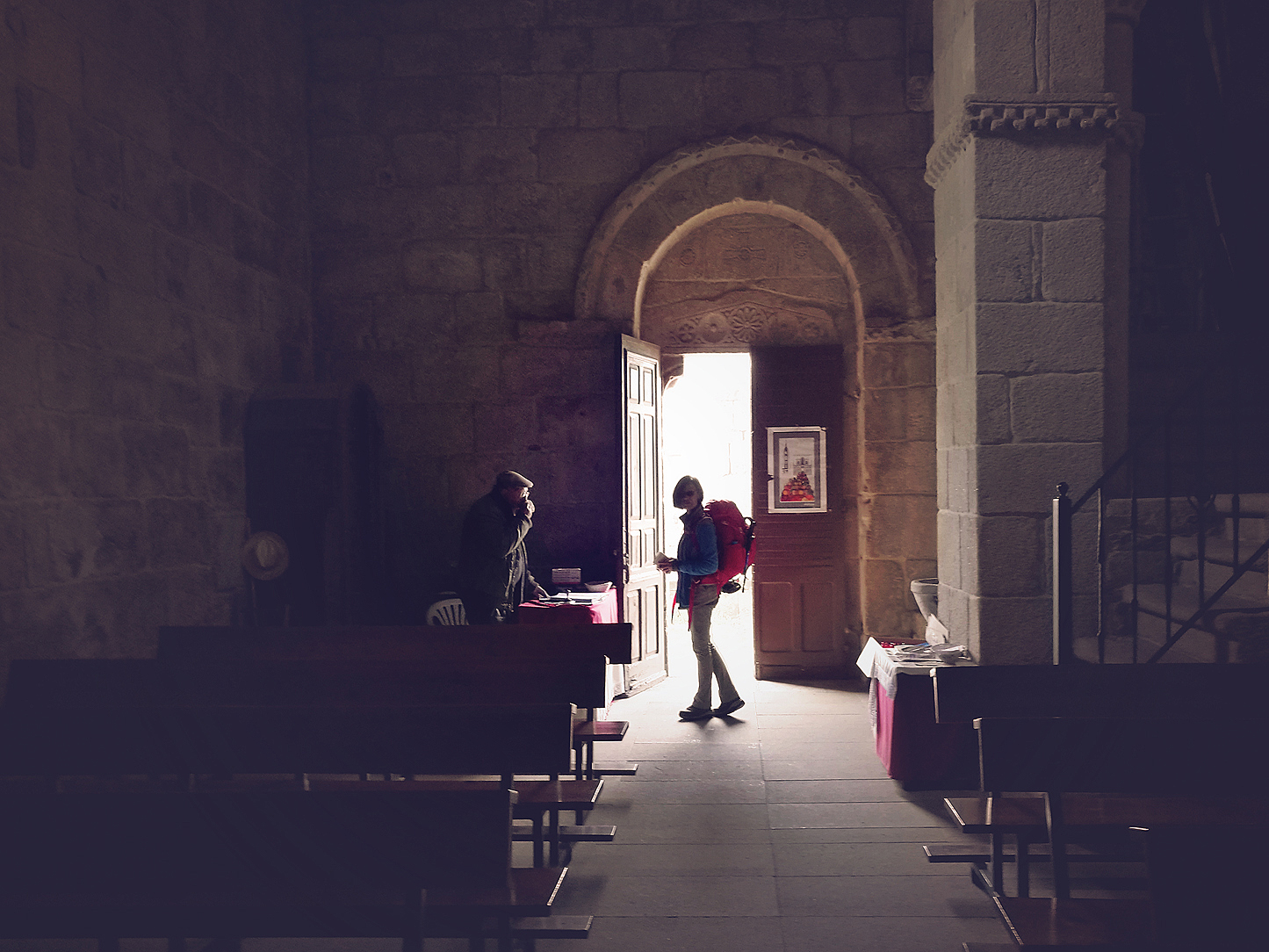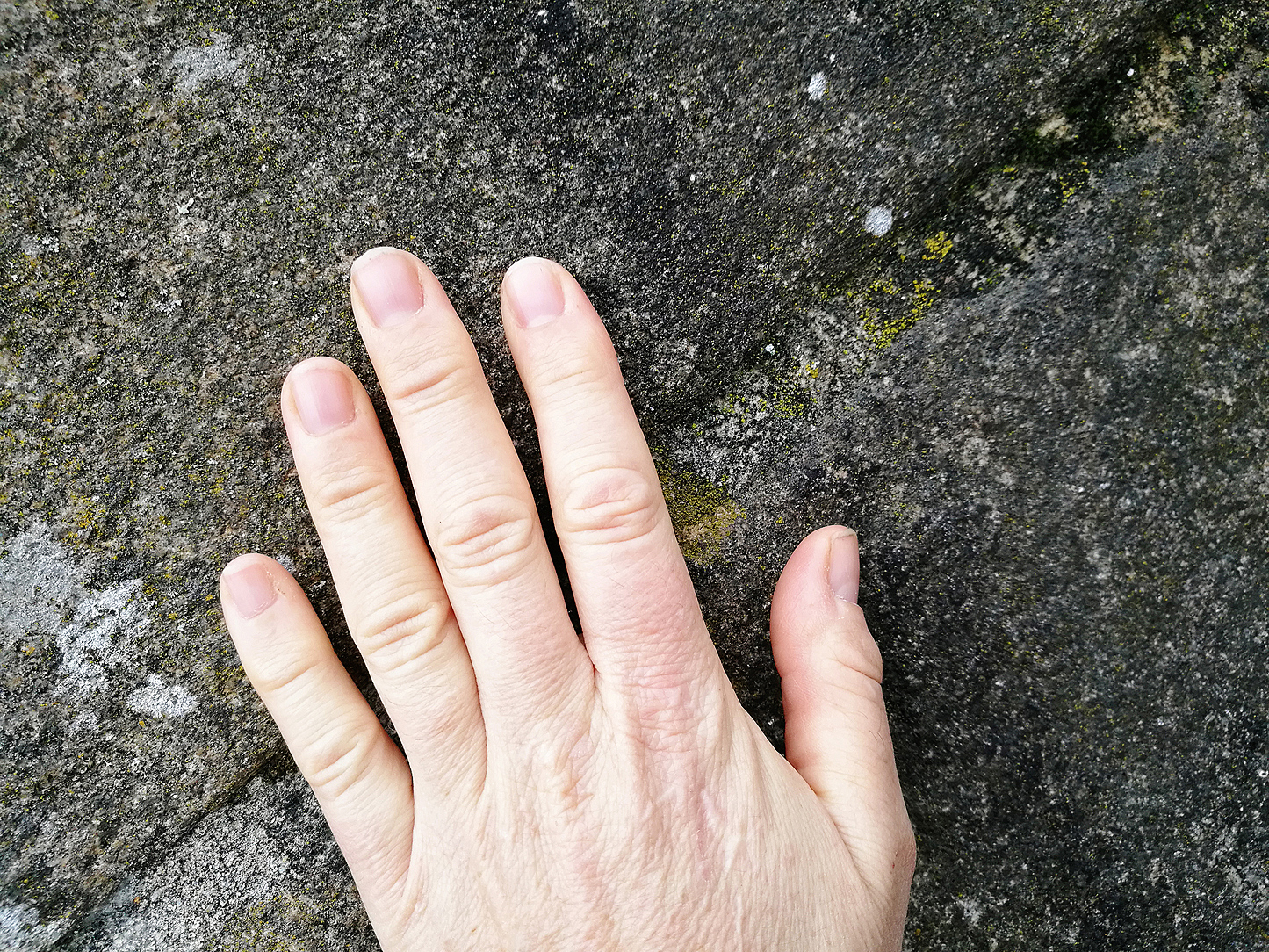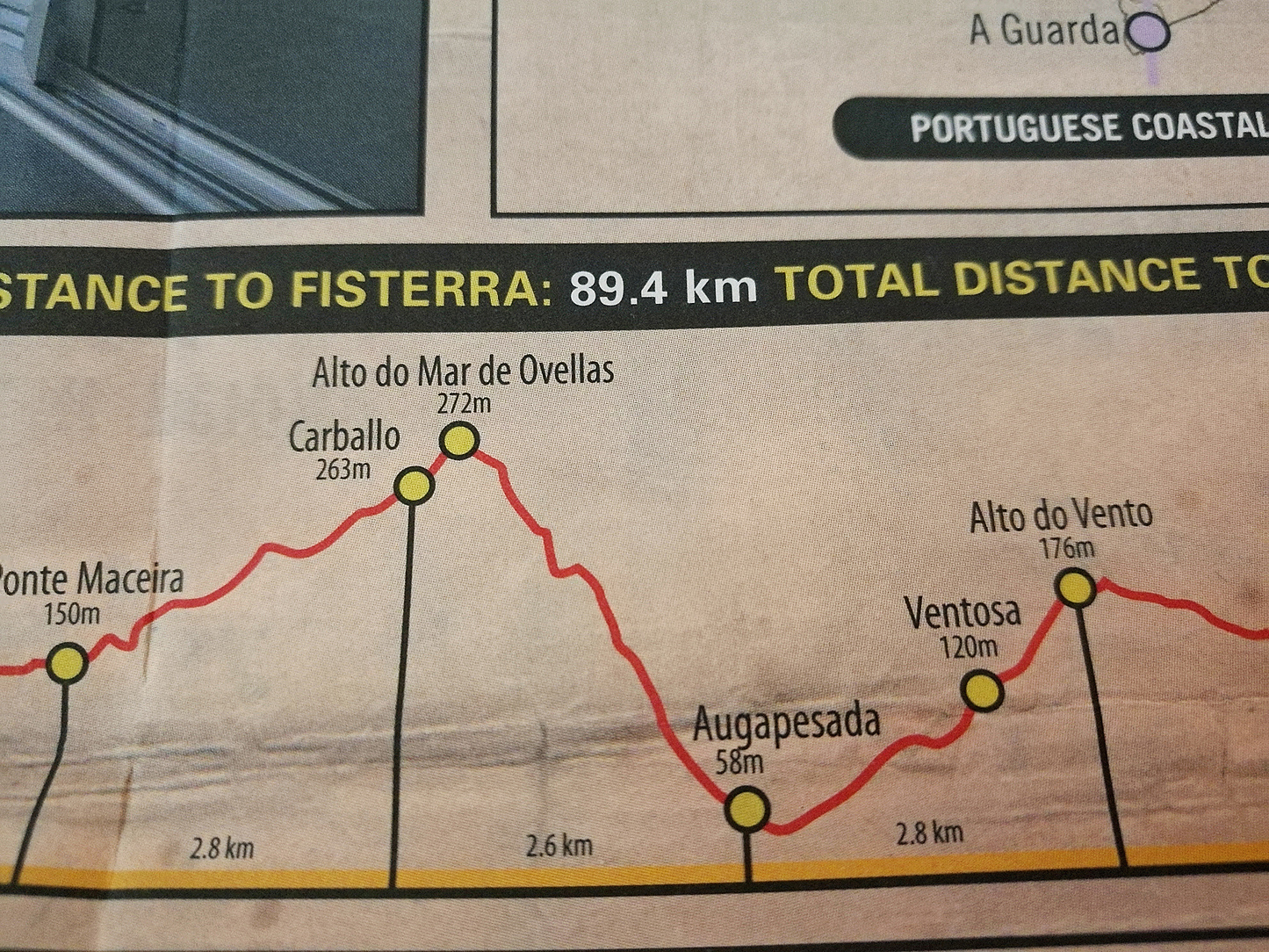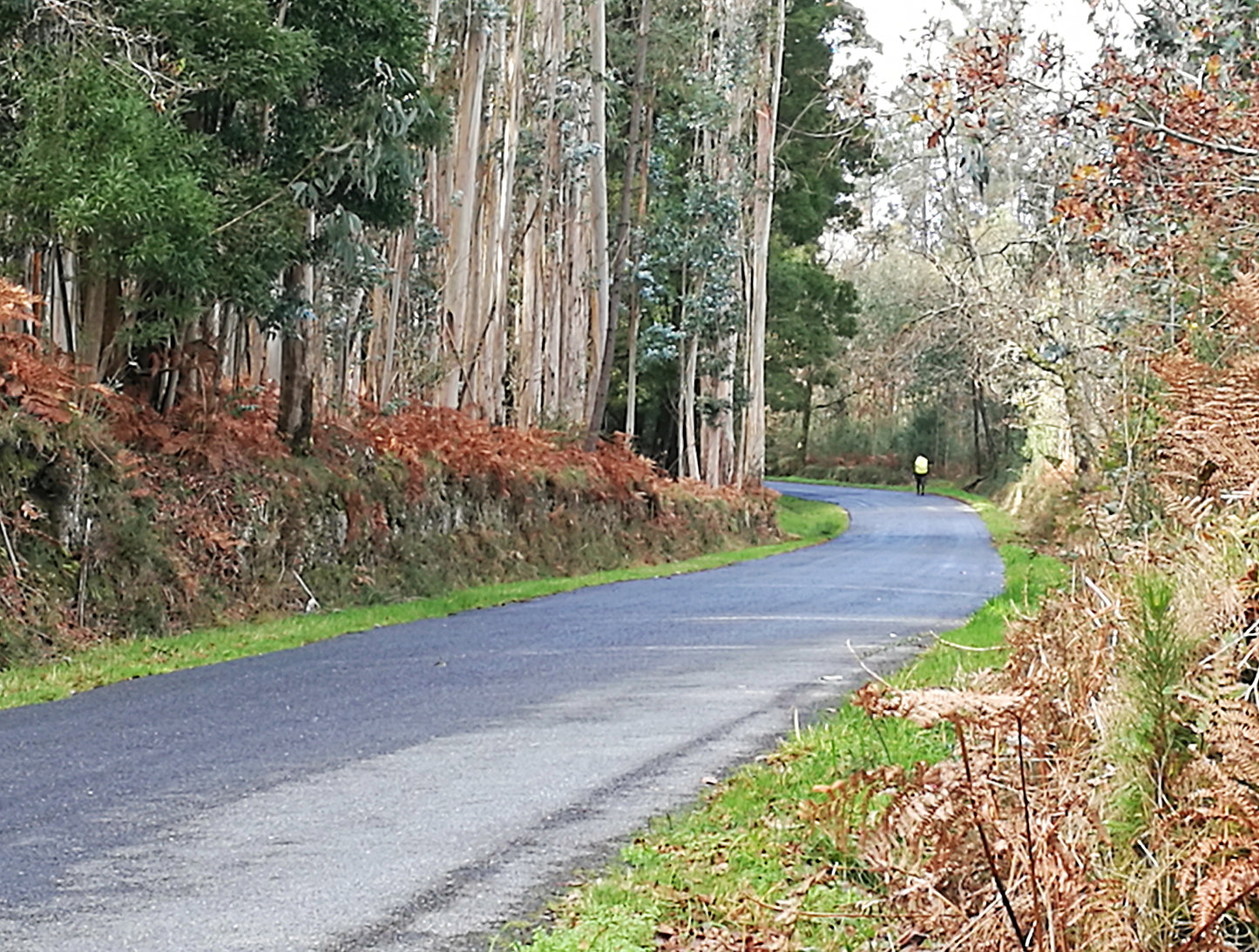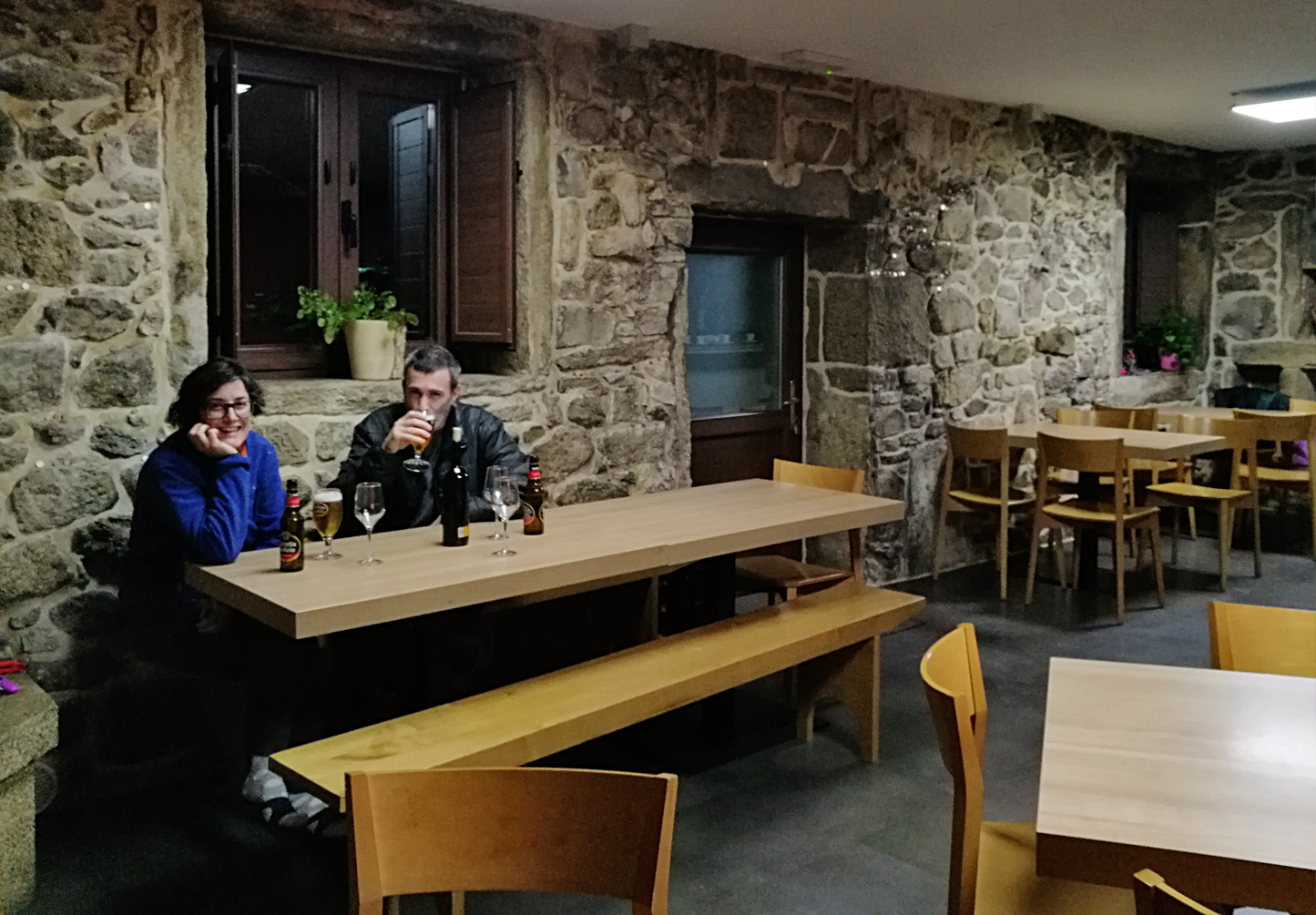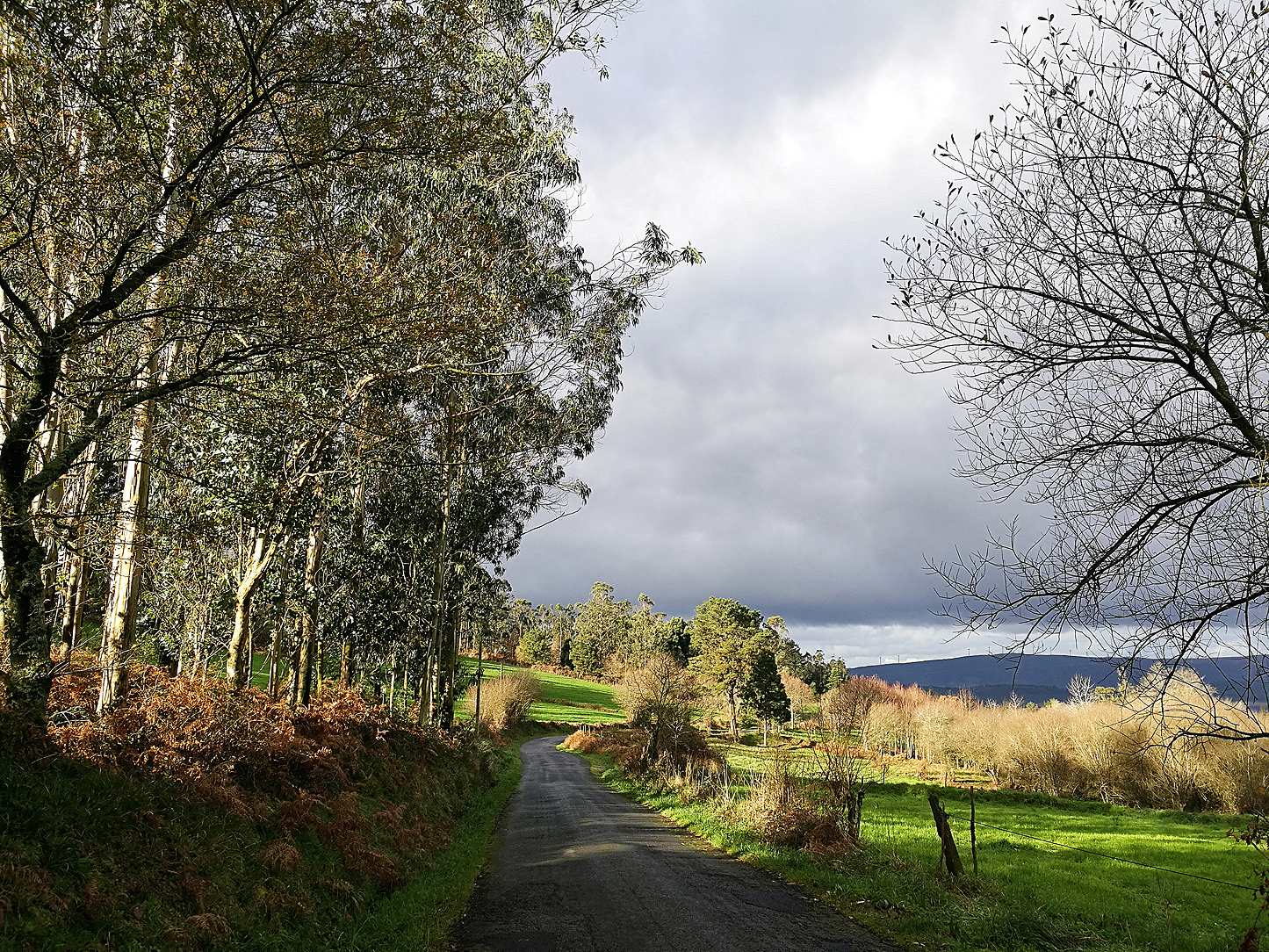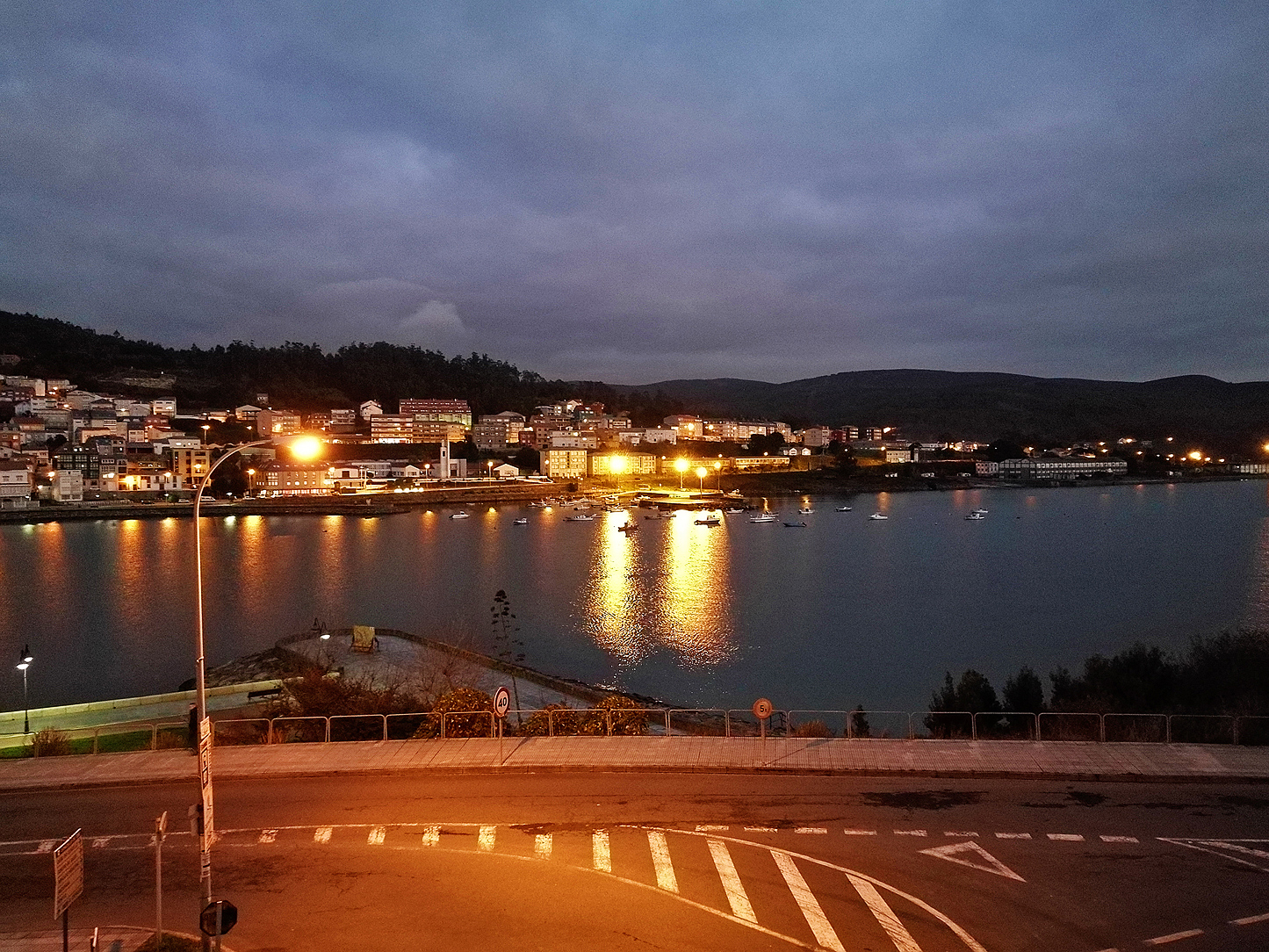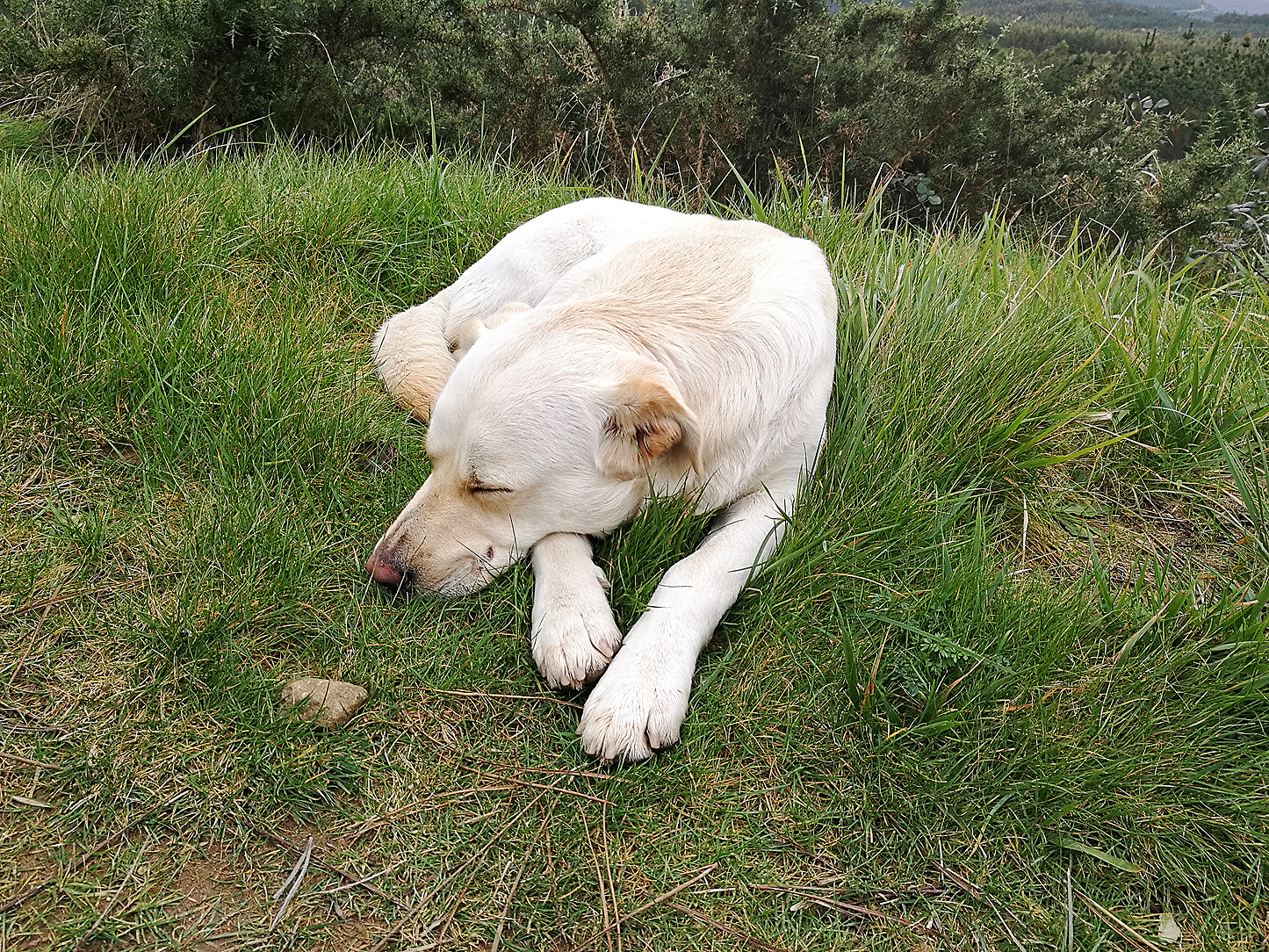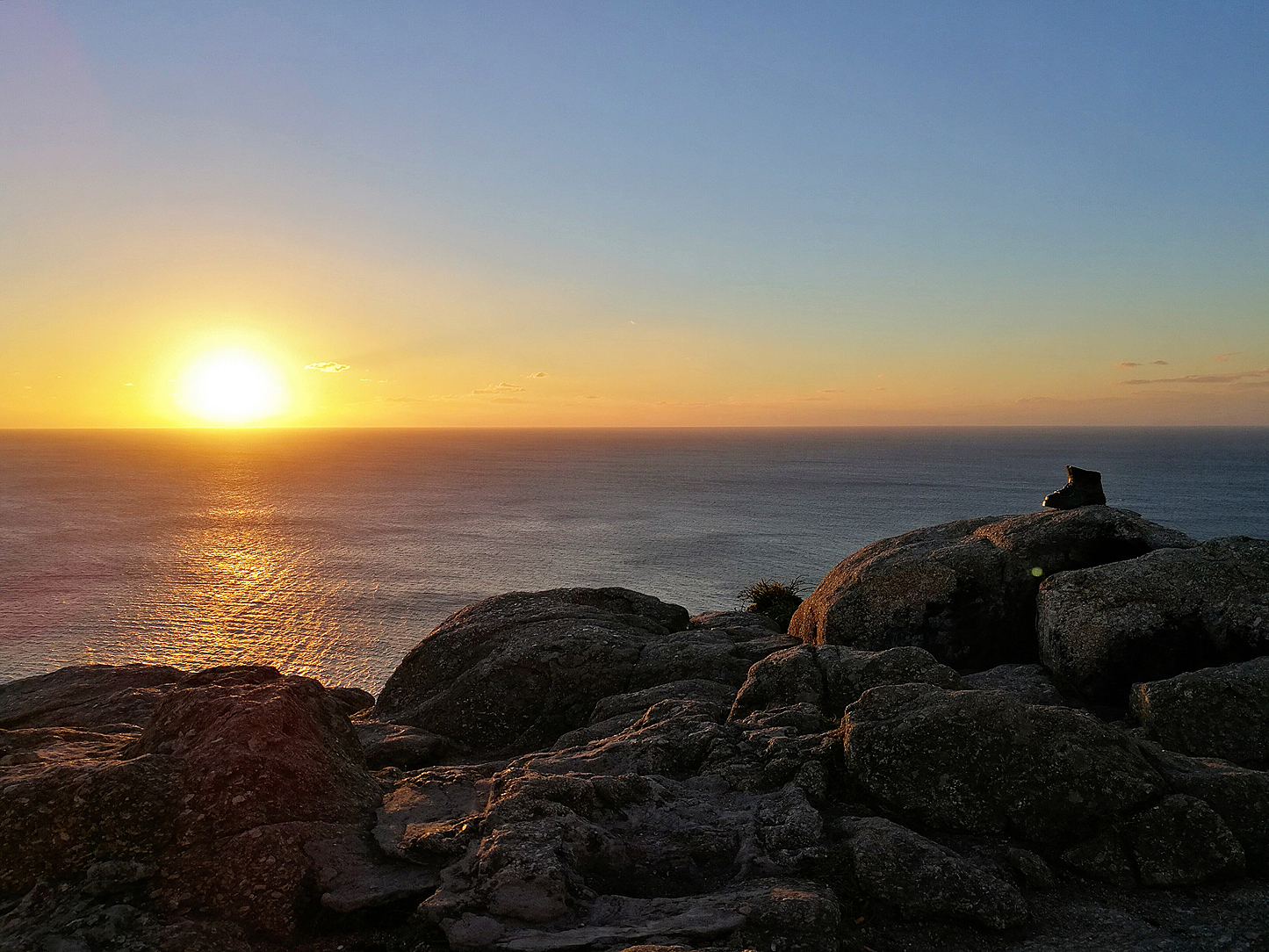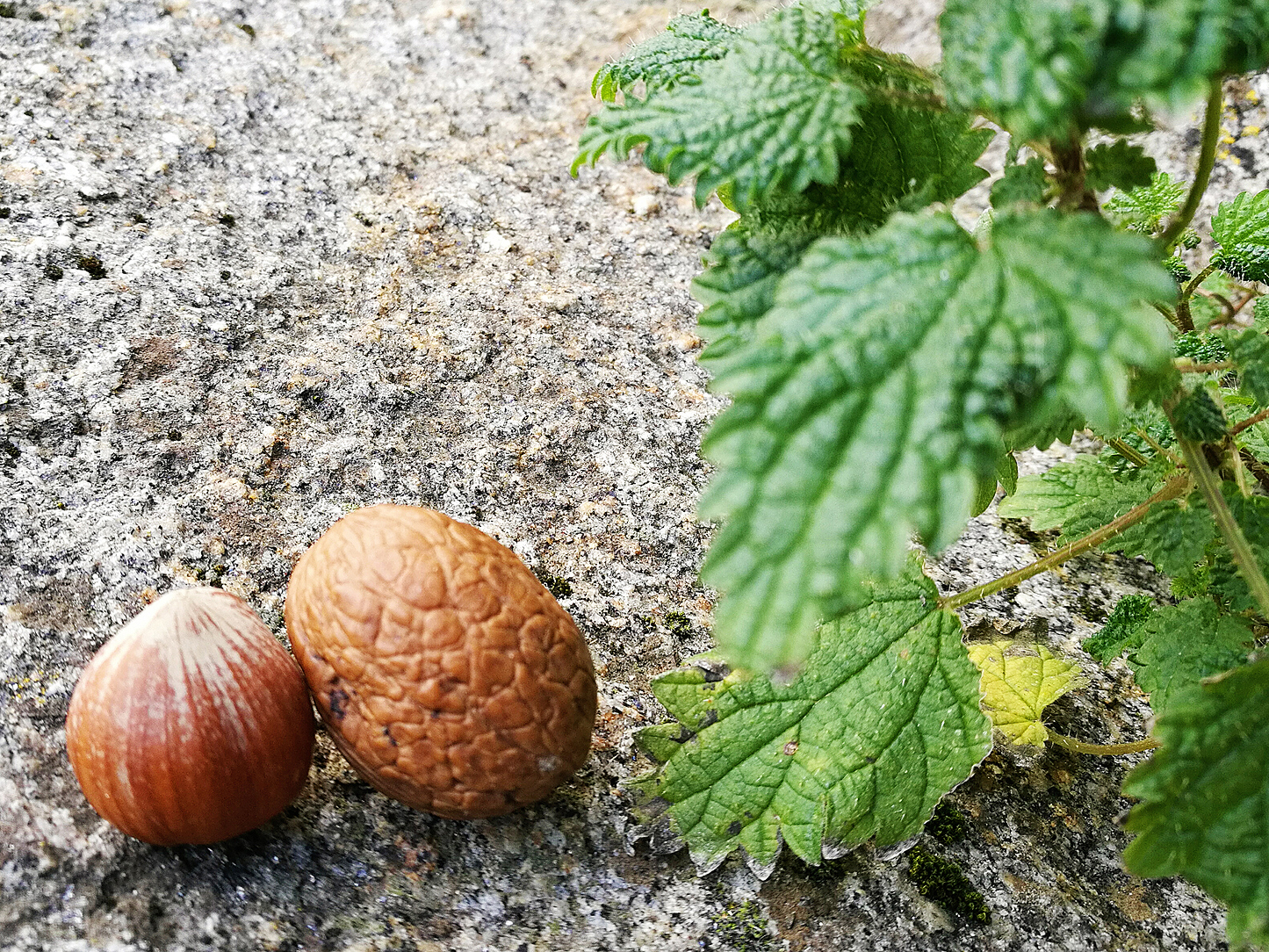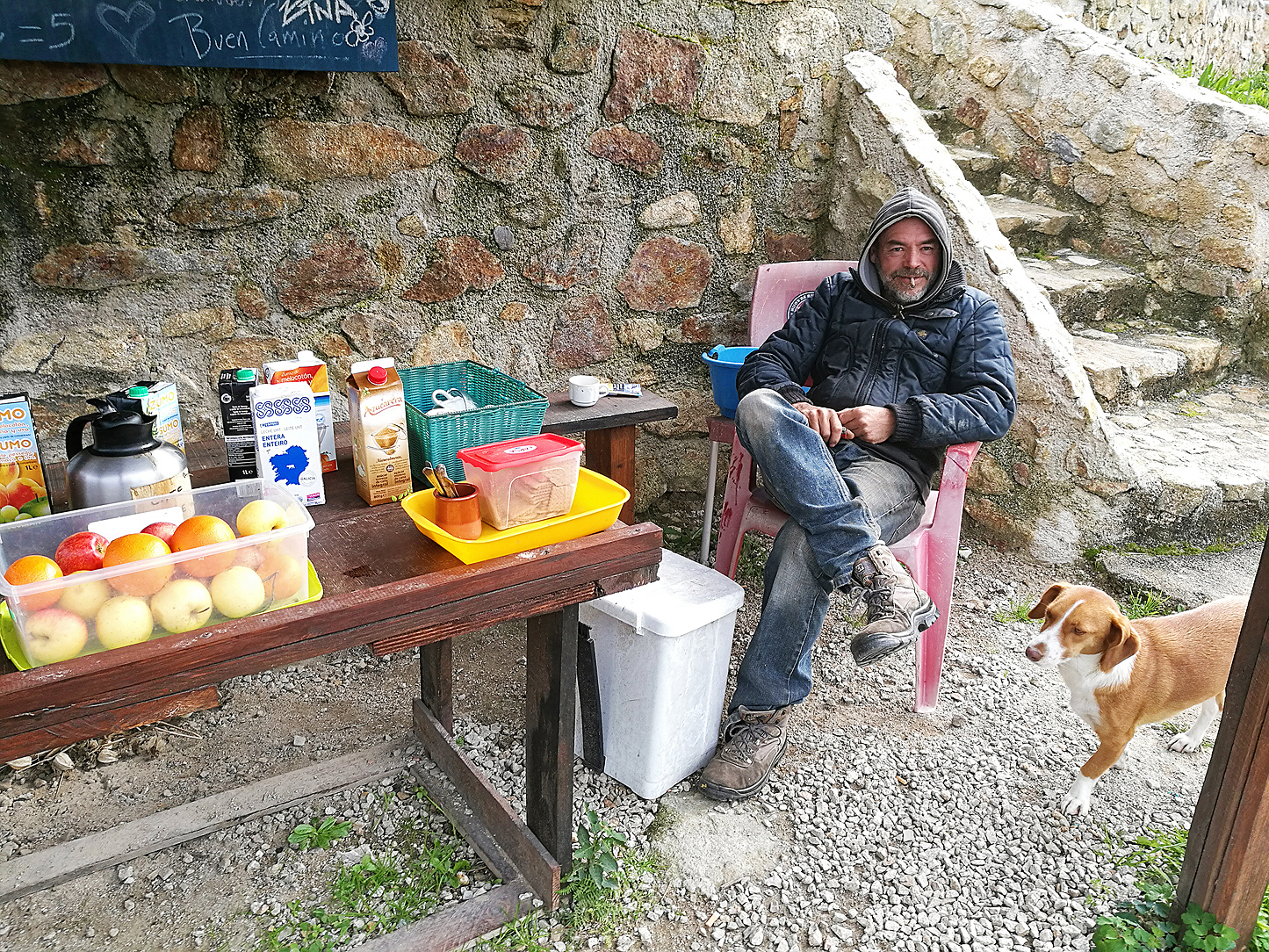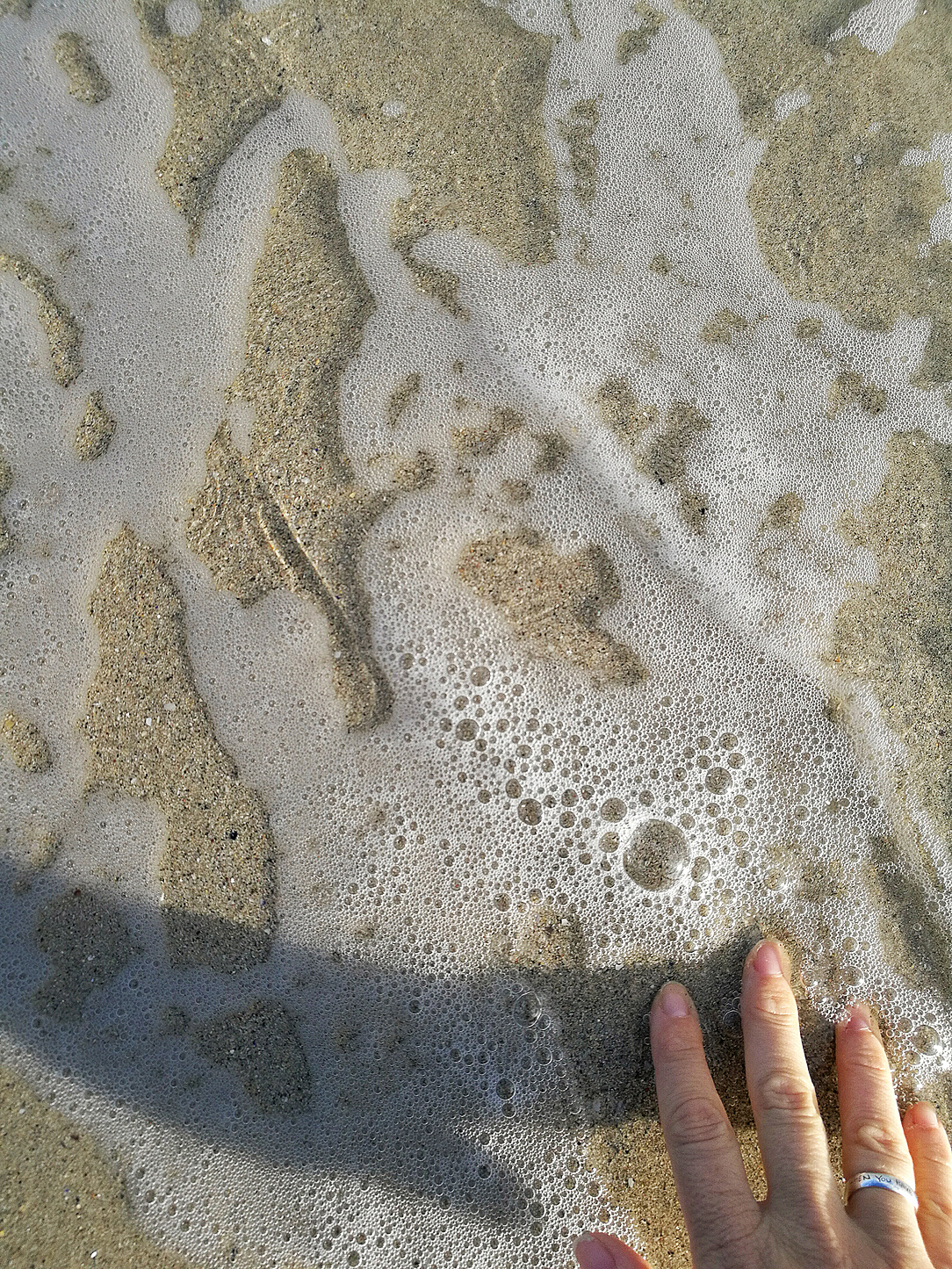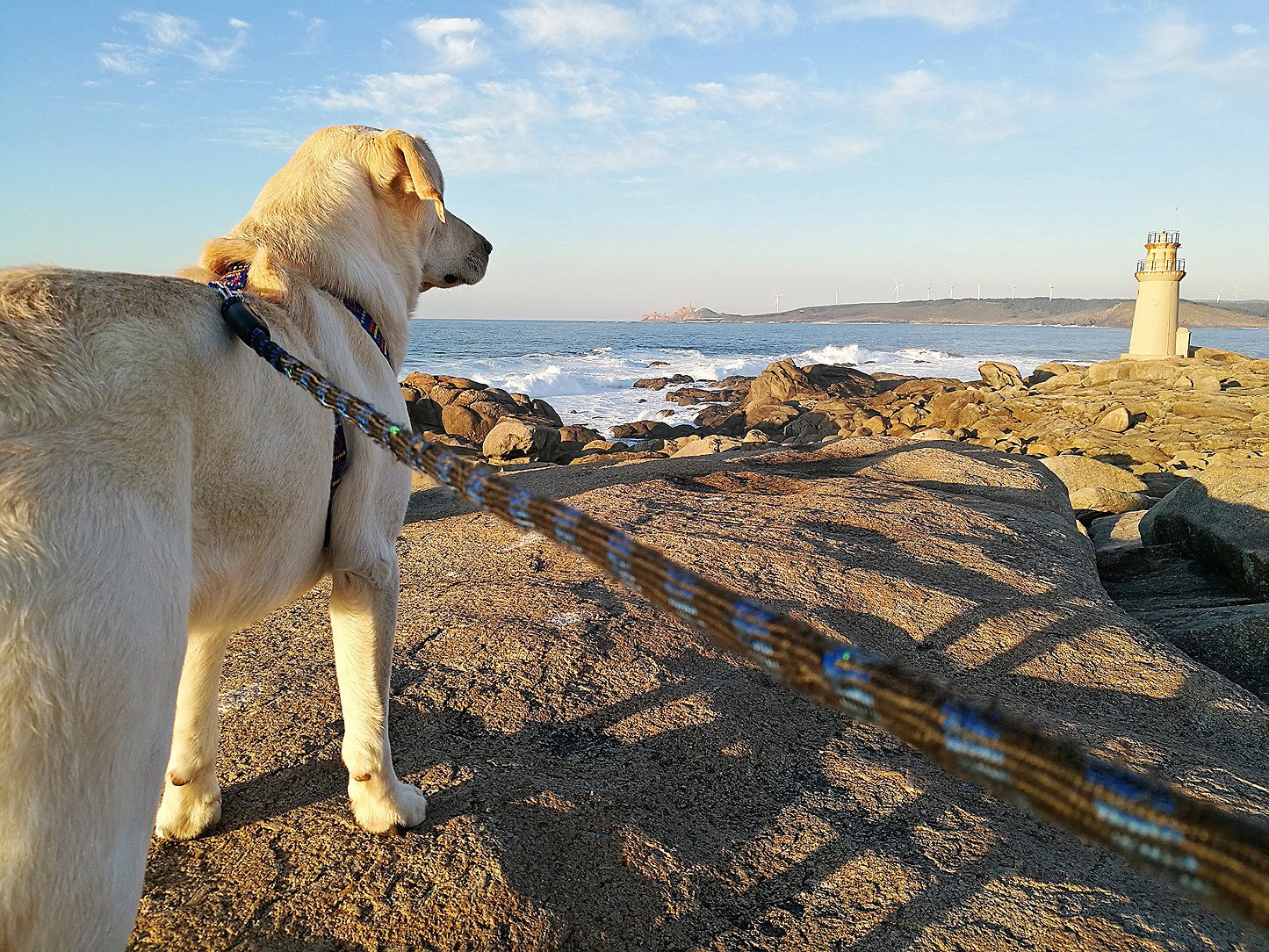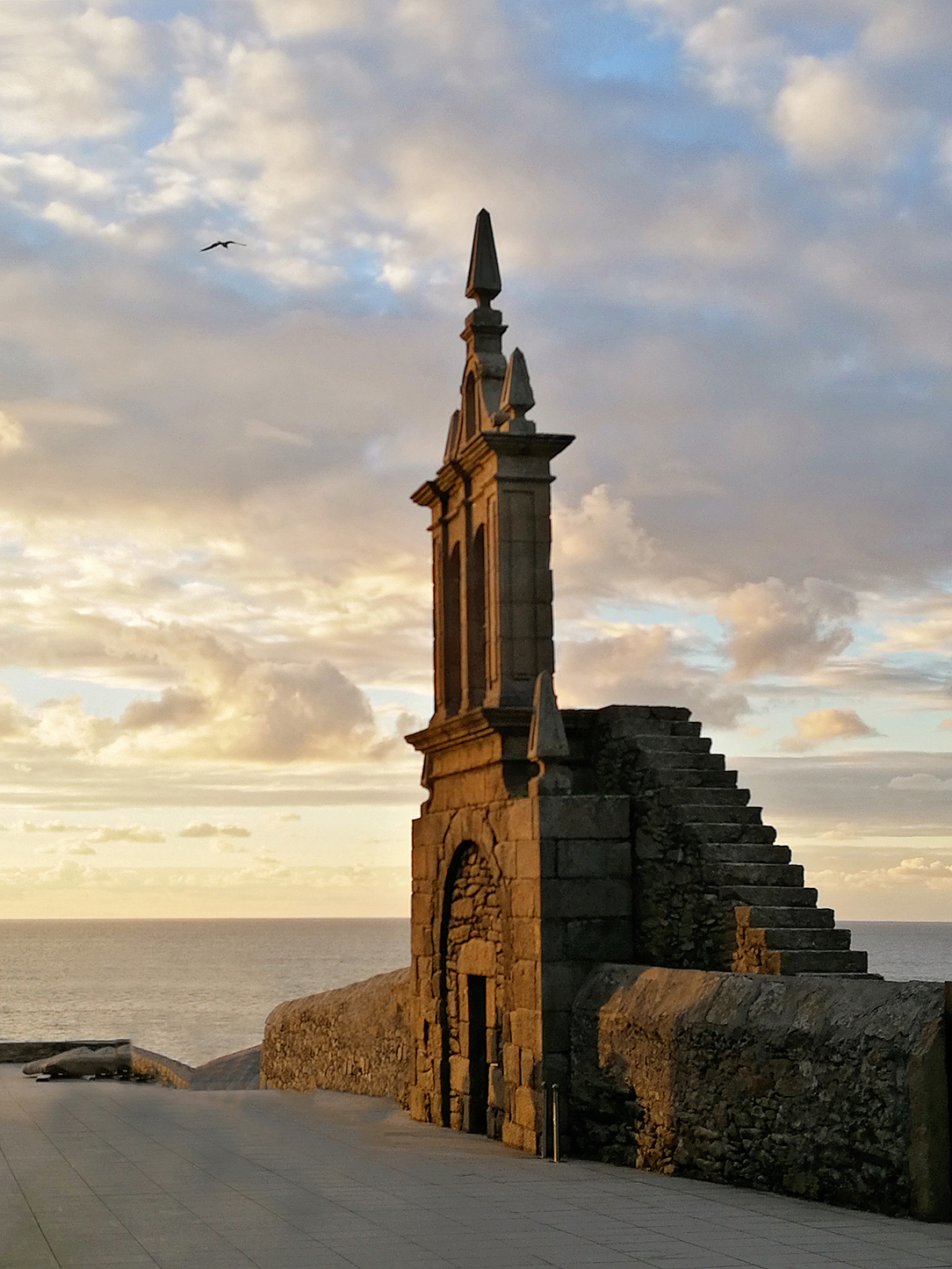In January of 2017, I walked the Camino de Santiago in Spain past the End of the World to Muxia, the ancient spiritual end of the Camino.
I walked to find answers, to mark and struggle with a significant birthday, and to get over my fear of visiting a country where I didn’t know the language. I came away with all of that and more… after it nearly killed me.
Waiting at LAX. My pack weighed all of seven pounds — only about half the recommended weight for a winter walk. I had lots of people on social media cheering me on, but what none of them knew was that I didn’t want to go. The prospect of spending a month in the middle of winter — including my birthday — walking through a country where I didn’t speak the language sounded like a spectacularly terrible idea. But CeCe, my traveling companion for the first part of the walk, was already in Madrid (and sick with a cold) waiting for me, so I had to go. Thankfully.
Day 1. Walking into the fog, trusting the journey without knowing what’s ahead. Every day of the Camino is like that, of course. That’s arguably the purpose of the experience, to let go of preconceived plans and let the path unfold in front of you. To start the day not knowing where you’re spending the night or what will happen, but only that the task in front of you is to put one foot in front of the other and surrender yourself to following the arrows wherever they lead you.
CeCe and I had both been worried about reports of stray dogs on the Camino, not because we were afraid of them, but because, both of us being dog lovers, we were afraid of what we’d do walking through the middle of a foreign country if we came upon one that needed rescuing. When we saw this little guy in the road, we thought our worse fears were realized on our first day. But “Charlie,” as we nicknamed him, walked with us for about half a mile, and then stopped at a crossroads and happily bounded back home. He was the first of many Camino animals to share our journey. But after CeCe left for Portugal and I continued on my own, I did in fact meet a dog desperately in need of rescuing….
One of the joys of walking is the opportunity to notice things that we often don’t see when we’re driving, like the late afternoon light falling on this little meadow, invisible from the road.
This is my favorite Camino photo, the closest we got to Standing Stones in the Galician countryside. In the damp northern Spanish climate, wooden fence posts would quickly rot, but stone is durable and abundant.
As we walked through a village, an old man spoke urgently to us in Galician. Not understanding, we waved him away thinking he was a panhandler as we’d encountered many of them. As we continued past him, we saw a church and decided to go see it. Looking back, we saw the old man following us. At the door of the church, he produced a key and opened the old door, ushering us inside, where, as the official caretaker of the church, he proceeded to proudly offer us the history of the altarpiece and give us a coveted “sello,” the stamps required on our pilgrim passports to complete the pilgrimage in Santiago. The Camino teaches many lessons and that day, it taught us one in the dangers of assumptions about people and how we almost missed a magical Camino experience because of our arrogance.
For all the stories about “vicious Camino dogs,” we encountered mostly dogs who were happy to live a life of freedom and peace in the country. This one made me miss River, my beloved rescue dog. I’d adopted her three years earlier and until now, she and I had never spent even a night apart. She was waiting not-so-patiently for me in New Mexico with a friend, along with Moe the Cat.
A pilgrim shelter, with a place to rest, cover from the rain, a basket for donations (in this case, it’s not clear exactly what they’d be for) and a book in which to record our passing.
At Portomarin, the modern bridge runs alongside the ruins of the ancient Roman bridge. We walked both.
On the Way.
CeCe and I joked that we could have completed our walk in 1/3 the time if we hadn’t stopped to say hi to every furry creature we encountered — dogs, cats, horses, sheep, goats and cows. But we were both animal-starved, and animals became a major part of our Camino experience — even more so for me after CeCe left for Portugal and I continued on my own.,
The pastoral Galician countryside.
Pilgrim tradition means starting the day’s walk no later than 8 a.m. — which in January, meant before sunrise, with frost still covering the landscape.
I am always happiest when I am interacting with animals, and the Camino was no different.
My pilgrim “credencial.” Collecting “sellos” or stamps along the way is how pilgrims arriving in Santiago prove that they’ve actually completed the walk. Plus it makes for a beautiful record of the journey. Finding sellos in the winter was more challenging, however, since many places that offer them were closed for the season — an acceptable trade-off for peace, quiet and solitude.
By this point, I was starting to get a little worried about my health. I was starting to feel the effects of a lack of fresh greens — a problem which had the potential to trigger my anemia, which until now had been mercifully absent. There were no greens to be found in shops or restaurants, so we resorted to stealing kale from private gardens. But it was tough and bitter and difficult to eat, so of limited help.
A lunch stop of bread, ham, cheese and jam beside an old stone bridge in one of the most storybook-beautiful places I’d ever seen. I said to CeCe, “If I die tomorrow, tell the people I left behind that it’s okay because I had this moment.” I thought of that comment often in the next few weeks when my anemia began to turn into a medical emergency, and I realized that I did, in fact, mean it. This moment was indeed worth it.
Sunset on the Way. The light in Spain reminded me a great deal of the light in northern New Mexico, a photographer’s dream.
CeCe happened to snap this photo mere minutes before one of the most significant moments of the Camino happened. About 30 seconds later, something shifted and what had been a challenging walk and a fun and interesting adventure turned into a true pilgrimage — Santiago went from an abstraction of little specific interest to a sacred destination. When I told CeCe about it a few days later and she showed me this photo, I was stunned because there was nothing particularly beautiful or interesting about this location by the side of a busy highway, and it’s the only time she took a photo like this. Why of all the times we rested by the side of the road did she choose this moment for a photo?
After my my walk became a pilgrimage, I walked separately more often. I loved and was deeply grateful for CeCe’s companionship and support, particularly as my health started to deteriorate, but I also very much needed to be alone with my thoughts.
“Two roads diverged in a wood…” I wanted very much to take the one less-traveled, but alas, the Camino went left. Then again, in the winter, the whole Camino is already the road less traveled.
Getting closer to Santiago. CeCe and I would part soon, she to continue on to Portugal to do some sightseeing, me to continue the walk to the End of the World and then beyond. I would miss her companionship and her red backpack, which made for an excellent focal point for my photos. 🙂
A day out of Santiago, I was feeling weaker by the kilometer and getting frustrated with my inability to access the food I needed to stay well. This was the closest I got to quitting. The Way tests a pilgrim, usually, it seems, right at our sore spots. But it also sends magic when it’s most needed. And that day, only moments after I thought The Thought about not finishing, this beautiful creature bounded out of nowhere and ran towards me in pure joy, and then guided me with his nose to a dry spot under a tree, where he proceeded to eat all my remaining cheese as payment for his grace.
The first sight of the Cathedral de Santiago de Compostela, from atop Mt. Gozo. You can see the three spires on the horizon to the far left of the photo, still about three hours’ walk away. I could feel Santiago pulling at me, like some sort of living invisible cord hurrying my steps and giving me energy to make climbs and cover distance I thought I was too tired for. I have never in all my years experienced anything even remotely like it.
Touching the stone of the Cathedral in Santiago. I arrived weak, bleeding and exhausted, and I sat down in the square in the rain and wept with joy and fatigue and gratitude. It was my birthday, and I was a pilgrim. Other than being healthy again, I couldn’t have asked for more.
In the piazza across from the Cathedral, CeCe is checking her phone for cheap hotels nearby. I covered her screen and pointed behind us at the legendary Parador, a converted castle and the nicest hotel in Santiago. “There,” I said. “There is where we’re going to stay.” And so we did. We were dirty and exhausted and probably a little smelly, but the staff graciously checked us in and the doorman carried our wet and muddy backpacks up to our room. I was so weak by then that I didn’t enjoy the luxury as much as I wish I could have.
My Compostela, certifying that I’d walked to Santiago. The text translates to: “The Chapter of this Holy Apostolic Metropolitan Cathedral of St. James, custodian of the seal of St. James’ Altar, to all faithful and pilgrims who come from everywhere over the world as an act of devotion, under vow or promise to the Apostle’s Tomb, our Patron and Protector of Spain, witnesses in the sight of all who read this document, that …………………has visited devoutly this Sacred Church in a religious sense (pietatis causa).Witness whereof I hand this document over to him, authenticated by the seal of this Sacred Church. Given in St. James de Compostela on the (day)……(month)……A.D. ………”
I still had over half of my planned walk to go — now solo, as CeCe left for Portugal. Common sense told me I was too sick to continue, but something compelled me to keep walking. Only at the end of the journey would it be revealed to me why I was so persistent in walking when I was so very sick.
The first day on my own, walking into the unknown. Nervous, anemic and already fatigued. I trusted in Camino magic and my own stubbornness to get me through, and would end up stretching that trust to its very limits.
The solo part of the walk, starting from Santiago (the blue dot with the shell icon pointing to it at the right) to Fisterra via the purple line and then to Muxia via the light blue line. Most people do one or the other, but as usual, I couldn’t make up my mind which one to choose, so I did both. Within a day, it was abundantly clear to me that I wasn’t strong enough to make it to either, but by then, I was stubbornly set on completing the walk.
Lunch by the side of the road the first afternoon on my own. I didn’t know it yet, but the issues I was having finding the right foods, along with the stress of the almost-constant uphill climb, were about to create a crisis situation.
The first time I met Dog. It wouldn’t be the last, and he would become my best and most important Camino lesson.
I had thought that the walk from Santiago to Fisterra & then Muxia would be an easy and lovely walk to the sea. Instead, it was days of constant uphill with only occasional breaks. (Much as I wished otherwise, the walk goes right to left in this photo.)
The tiny yellow figure at the end of the road was my Camino angel that first day. Simona appeared in the middle of that extreme elevation climb just when I thought I couldn’t go any further. It was getting late in the day and I was afraid I wouldn’t make it to shelter before dark. It was particularly difficult to keep a good pace and make it to the top on my own without CeCe and me encouraging one another.
Simona, who walks much faster than I do, graciously walked with me during the hardest part of the day’s climb, and having someone to keep pace with and talk to gave me just the added speed and endurance to make it.
On the Way. The landscape changed dramatically as I approached the Spanish coast.
Another Camino angel, who walked with me for quite awhile before turning for home — again, appearing at a time when I was doubting my ability to continue. I was feeling a bit lost, psychically speaking, without my Camino partner, when this little black beauty comes out to greet me, meowing and chirping and purring.
I started to worry that she’d follow me onto the road or too far and get lost, and when she persisted, I started wondering how I was going to sneak her into the albergue with me if she insisted on coming along for the adventure….
She walked with me for a bit, and then suddenly, as angels tend to do, she disappeared, probably to help the next pilgrim who came along.
I have a thing for old stone bridges, as you can probably tell.
I was getting weak enough that it took me three times as long to travel the same distance as it had in the earlier part of the walk. That meant getting up before dawn so I could make the long distances between shelter before dark. On the bright side, I was rewarded with spectacular photo opportunities.
I arrived at the 14km mark for the day (the upper reaches of what I could do in a day at that point), and the albergue I’d planned to stay in turned out to be little more than an abandoned house — no heat, no hot water, no kitchen and no one to stamp my credencial with the required one stamp per day.
Dispirited, I set out in search of food and a stamp, resigned to a cold shower and a cold night, when I met my Camino angels for the day, David and Monica, a couple from Spain who told me that there was a lovely private albergue open 9 km further along.
At that point, 9 km felt like 900, but they said they’d walk there with me, and having companions made the difference. I walked way past what I thought I could do. Another lesson that when you have to, you can.
Occasionally, the road leveled out and I could catch my breath and admire views like this one. I deeply loved the medieval forests and glens, as well as the ancient stone villages, but I loved the open, green pastoral landscapes best. It was like walking through a Turner painting.
The walnut had been given to me on our first day of walking. I’d slipped it in my pocket, and it gradually became a “he” named (what else?) Waldo. Waldo, like Winston the Volleyball in the movie Castaway, became my traveling companion when CeCe left for Portugal. Waldo eventually fall in love at the End of the World and endure being smuggled through US customs buried in a secret pocket of my backpack because US customs law prohibits the import of raw nuts from Spain (Yes, Waldo is thus an illegal immigrant.)
Wherever that kale was growing, it wasn’t finding its way anywhere I could get at it. By now, my physical condition had deteriorated significantly and I was struggling to find any fresh greens I could to help my anemia. Kale grew in abundance in private gardens all along the way, so I’d assumed I’d be able to find it in restaurants and supermarkets, but there were only occasional small bags of slightly-spoiled salad available, and even those were few and far between.
It was amazing to me that I could walk every step with pain and still be constantly aware of the beauty surrounding me. In some ways, the pain made the beauty more acute, because of the price I was paying to see it.
The harbor at Cee. My view for the night and one of the lovelier and more romantic stops on the Way.
My third meeting with Dog. I’d met him two days and 30 km earlier for the second time, when a fellow pilgrim offered to take him back to the last village so he could find his way home. Now here he was again, this time in the middle of nowhere, following two young pilgrims who obviously had not learned the Camino rule about never letting dogs follow them. I explained to them that, as per Camino custom, it was now their responsibility to return Dog via taxi to where they’d met him, and because they looked pretty broke, I gave them 20 euro for taxi fare. I hoped that would be the end of it, but of course, it wasn’t.
When I finally arrived at the place I was supposed to stay that night, I discovered that my tenuous grasp on the language had failed me and the reservation I’d made earlier in the day that I thought was for a room was for the restaurant, as the hotel was closed for the season. The next possible place to stay was 3.5 km further up the road. When I finally arrived, my fatigue must’ve shown on my face because the elderly man who greeted me put his very grandfatherly arm around me and said in Spanish, “first, you eat, then I’ll take you to the room.” Whereupon I was presented with a huge hot bowl of caldo (Galician potato soup) and a basket of fresh baked bread. When caldo is good, it’s very very good, and when it’s bad, it’s very very bad. This was very very good caldo.
After I ate, the old man drove me back to the village to this beautiful house, which I had all to myself, filled with soft beds and plush towels and all the hot water, peace and privacy that I could want for. Desperately ill though I was, I don’t think I’ve ever felt richer or more blessed than I did at that moment.
First sight of the ocean and of Fisterra. At the very very left of the hill in the distance, you can see the famous lighthouse at Fisterra, which was considered the end of the known world before Columbus discovered otherwise.
The World Family Bar on the outskirts of Fisterra. Fisterra is the Key West of the Camino, a Spanish “Margaritaville” and home to the Camino Heads — pilgrims who have never been able to find their way back home after walking the Way, something that happens more often than you might think.
Sunset at the Fisterra lighthouse. The boot is a bronze sculpture set there to immortalize this place as one of two traditional ends to the Camino, and “The End of the World.” (I don’t know what the little green dancing light is below the boot and will leave you to speculate.)
Pilgrim shoes in Fisterra. They say that whatever your ghosts are, they will find you on the Camino. Even here at the End of the World, there were a handful of pilgrims I’d encountered on the walk that I wanted to avoid, and sure enough, the young couple I’d given taxi fare for Dog were there. They didn’t have Dog with them, and I was afraid to ask what had happened, so I avoided them for the entire day, ducking into shops and alleys when we crossed paths.
Touching the sea in Fisterra on my way out of town. Many pilgrims end their Camino in Fisterra, and I could have as well and probably should have, from a health and sanity point of view. But Fisterra felt mostly like a party town shut down down for the winter — I felt little to no sense of the sacred there and felt compelled to continue despite my anemia.
Waldo, on the other hand, was very happy with his trip to Fisterra — he met the love of his life, Hazel, and the two of them would be inseparable through the challenges of the rest of the Camino, a border crossing fraught with peril and many adventures in the States.
I was obsessed with making it all the way to Muxia, but one of the constant temptations of the walk were these taxi signs every kilometer or so. It was like being so thirsty all you could think about was something cold to drink, and having to turn down a tall glass of ice water over and over again.
I absolutely didn’t want to take a taxi, not just because I felt it would invalidate my pilgrimage, but because I didn’t want the people back home who were following my journey on social media to know just how precarious my health situation was.
Shelter along the way. One of the challenges with walking in winter was that most places were closed, so I often had to walk far past my capacity (or so I thought) to find somewhere to spend the night. But Camino magic, which I’d come to believe in, came through time after time, providing just what I needed just at the point where I truly couldn’t walk a step further. At this little inn, the proprietress and her mother took one look at me and ushered me into their kitchen, sat me down in front of a warm fire, and fed me tea and oranges (from Spain, not China) until I was strong enough to finishing checking in.
Sometimes it’s the small graces… pink jasmine, my absolute favorite scent in the world, blooming right outside my door.
One of many human Camino angels, and his dog named Fisterra. They asked for nothing in exchange for the juice and food, and told me stories of their Caminos, one of which was a walk from Rome to Santiago together years before.
The final day, back inland and all uphill until the last few miles down to the sea. By this time, I was stopping every ten paces to rest and a walk that should have taken a couple of hours took the entire day.
On the final day, poet Mary Oliver was another Camino angel. A portion of her her poem, “A Summer Day,” appeared on the wall of a bus shelter where I stopped to rest. I walked the Camino in part to find an answer to the question of what to do with my one wild and precious life. I didn’t have the answer yet at that point, but I had noticed that while the Camino didn’t always give me what I want, it always seemed to give me what I need. I had faith that if I needed the answer, it will be there for me in Muxia. And so it was…
I was so weak by the time I reached Muxia that two kilometers away from finishing, I collapsed by the side of the road, unable to walk further. To weak to even hold a pen, I made a recording of myself, crying “I’m so tired. Everything hurts. I’m so ready to be done.” (listen above) I don’t recall ever having been so physically and emotionally exhausted in my entire life.
The beach at Muxia. Only a kilometer after I’d collapsed in tears, Camino magic lifted me and I felt a surge of energy and joy. I have no idea where it came from or how, but I was so deeply grateful for it that I started crying all over again. This mysterious and miraculous energy gave me enough strength that, instead of heading immediately for hotel I had booked, I took the long way through town, not wanting my Camino to end quite yet. Of course, it wouldn’t truly end until the last walk to the Sanctuary of Virxe da Barca at the edge of the sea on the following night.
Touching the sea at Muxia. It looked like the same moment as in Fisterra, but Muxia immediately felt like the true spiritual end of the Camino, as so many have claimed that it is.
The view from my room in Muxia. When I arrived at the hotel, who should be waiting for me — of all places — but Dog, a full 100 km from where I’d first met him. I understood coincidence, but this pushed over the limit, and by now I also suspected there were no coincidences on the Camino. Dog was my problem to solve and my lesson to learn.
As I considered what to do, a young family with a dog on a leash walked by and — by another amazing coincidence, turned out to be dog rescuers and agreed to take Dog home and try to locate the owner while I researched how to get a dog from Spain to the US — just in case.
Dog with me at the lighthouse at Muxia. I had three days before my flight left from Madrid, during which I worried and I researched the difficulties in getting a large stray Spanish dog with no medical records safely back into the US.
The doorway of the Santuario da Virxe da Barca.
Food choices in Muxia were particularly sparse in the wintertime, and though I’d finished the walk, I was getting weaker daily without access to the care and diet I needed. Seeing a “hamburger restaurant,” I was hopeful for some red meat full of iron and protein, but however much this looked like a hamburger, I have no idea what it actually was, as it had the consistency and taste of instant mashed potatoes.
The harbor at Muxia.
A sparrow murmuration. They did their dance every evening I was there. It was and still is one of the most remarkable things I’ve ever seen.
The last way marker. Despite all the challenges, I was sad to pass it.
Sunset at Muxia. As sick as I was, I was drawn to the edge of the sea to see the sun set every night of my stay in Muxia, three times in all, a fairy tale number.
On my last evening in Muxia, I got an email from the couple who was fostering Dog. They (and their dog) had fallen in love with Dog and were going to adopt him.
Against all odds, Dog made his way over 100 km across northwest Spain, appearing, beyond improbably, at my hotel exactly at the moment the couple who eventually adopt him passed by so I could call out to them to help him. I believe that everything that happened and my relentless push to reach Muxia against all common sense and good judgement was so that I could be there to greet Dog when he arrived. Had I not been there, it’s likely that the couple would have shooed him away, as is the custom, assuming that he had a home somewhere, and he would likely have become a street dog.
With the Camino magic that I’d come to expect, just as I was leaving my hotel room, Dog and his new family walked by beneath my window. I leaned out and yelled, “Gracias, gracias!” and waved like a crazy lady, but I didn’t care. I was so happy to see him safe and cared for. It was the last — and best — gift of the Camino. I flew 8,000 miles and walked 250km to save the life of a dog. Yep, I’m good with that.
The Santuario da Virxe da Barca — the ancient spiritual end of the Camino. As I left the Santuario on the final night, an old man leaning against the wall of the sanctuary asked me if I was a peregrina, a pilgrim.
And for a final time, I said yes.






